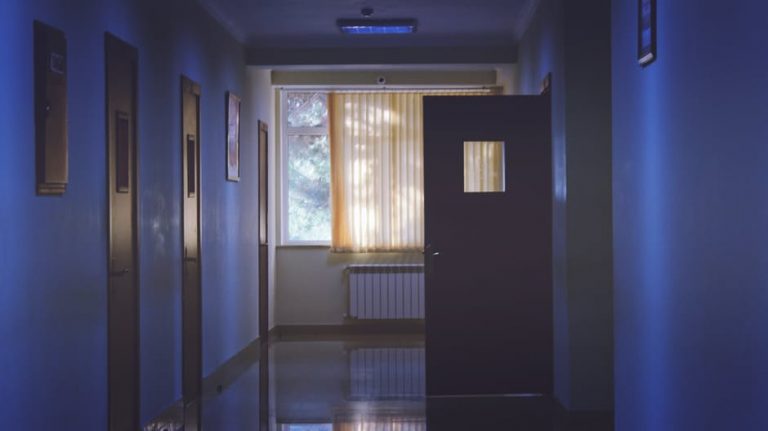Sonya Chistov
September 6, 2017
Emergency departments (ED) across the country are combating the problem of “crowding”. A combination of sources are commonly cited as the reason for crowding including the increase in ED visits in the past twenty years, the decrease in EDs across the country, and lack of space or staff in EDs. Despite these relevant issues, a dominant cause of crowding in the ED is admitted patient boarding [1].
When all inpatient beds are occupied, the ED is responsible for boarding patients within their rooms and hallway spots. This entire process influences ED metrics such as average wait times, time to triage, time to decision/admission, and the number of patients who leave without being seen. Aside from ED operational logistics, the quality of care for boarded admitted patients is coming into question. The Joint Commission reported crowding contributing to 31% of sentinel events in the ED. Errors that lead to sentinel events can occur as a result of hurried treatment, decisions based on limited information or poor transfer of information, delayed order completion, and limited reevaluation of treatment plans or temporary diagnosis. [1] In addition, ED boarding is associated with longer lengths of stay within the inpatient units, as well as increased patient mortality. [2] With all of this mounting information about the hazards of boarding, what barriers prevent patients from moving from the ED to inpatient units when available?
Beyond the metrics of having available beds, turnaround time for cleaning, and transport from the ED to inpatient floors, there needs to be an examination of the, often intangible, hospital culture in our current healthcare system. Hospital culture is defined as a set of assumptions formed by a hospital group to resolve internal and external pressures, taught to new members as a preferred method to think and deal with these pressures. Hospital culture is layered and dynamic, with surface traits such as dress code to core staff mentality, which dictates performance and ultimately patient outcome. [3] McClelland et al. developed The Hospital Culture of Transitions (H-CulT) survey to assess organizational culture related to intra-hospital transitions in care, specifically with patient movement. The survey measures seven subscales in the culture of transitions: Hospital Leadership, Unit Leadership, My Unit’s Culture, Other Units’ Culture, Busy Workload, Priority of Patient Care and Use of Data. The questions from each subset gauged the perceptions of staff members towards things like policies and procedures, teamwork in transition, staff’s perception of timeliness, and even barriers to effective transitions. Respondents were also asked to give an overall grade (A-F) on patient transition within their hospital. Finding discrepancies in a specific subset can indicate the type of intervention needed within the hospital, to promote more cohesive and timely transition of patients from unit to unit. For instance, if respondents suggest that there is a delay in transition because of specific staff avoidance in accepting new patients, a unit profile can be developed and a new system of transfer can be implemented. Each hospital faces different barriers, but ultimately this study found the H-CulT survey to be effective and practical for assessing hospital culture in relation to patient flow and provides potential guidelines to mediate these issues.
If ED crowding can be directly correlated with a hospital’s culture, what can we do to reconcile this culture and ultimately provide a safe and patient-focused plan to mediate this problem? In 2001, Peter Viccellio, Vice Chair of The Department of Emergency Medicine at Stony Brook University Hospital, initiated a “full-capacity” protocol. He disagreed with the existing protocol of admitted, stable patients to board in the ED until an inpatient bed became available. Instead, he suggested that if the entire hospital has reached full capacity, any patient that would be placed in the ED hallway to wait, could and should be placed in the hallways of the inpatient floors. Viccelio and his team conducted a longitudinal study within their hospital to address concerns for patient safety as a result of their newly established procedure. Their study concluded that transfer of admitted, hallway placed patients to inpatient floor hallway did not increase patient mortality or emergency ICU upgrades. [4] In addition, studies suggest that patients would prefer to be sent to inpatient hallway beds than stay in the ED hallway, which can increase patient satisfaction hospital wide. [5]
ED crowding is a complex issue that contains many variables, but with improved methods to measure what was once deemed indefinable, action should be taken when available. With changes in hospital culture or implementation of updated protocols, hospitals can tackle the issue of ED crowding to provide more patient-focused and safe care.
[1]Moskop JC, Sklar DP, Geiderman JM, Schears RM, Bookman KJ. Emergency department crowding, part 1—concept, causes, and moral consequences. Annals of emergency medicine. 2009 May 31;53(5):605-11.
[2]Singer AJ, Thode Jr HC, Viccellio P, Pines JM. The association between length of emergency department boarding and mortality. Academic Emergency Medicine. 2011 Dec 1;18(12):1324-9.
[3]McClelland M, Bena J, Albert NM, Pines JM. Psychometric Evaluation of the Hospital Culture of Transitions Survey. The Joint Commission Journal on Quality and Patient Safety. 2017 Jul 19.
[4]Viccellio A, Santora C, Singer AJ, Thode HC, Henry MC. The association between transfer of emergency department boarders to inpatient hallways and mortality: a 4-year experience. Annals of emergency medicine. 2009 Oct 31;54(4):487-91.
[5] Viccellio P, Zito JA, Sayage V, Chohan J, Garra G, Santora C, Singer AJ. Patients overwhelmingly prefer inpatient boarding to emergency department boarding. The Journal of emergency medicine. 2013 Dec 31;45(6):942-6..
Sonya Chistov is an ED Technician at The George Washington University Hospital





